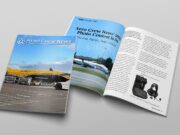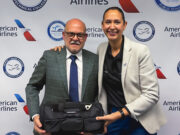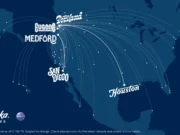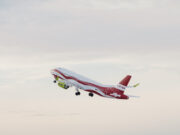
In last month’s article, we discussed two of the primary considerations for pilots thinking about transitioning from business aviation to the airlines – money and quality of life. This month we’ll look at a third consideration, something pilots might not examine to the degree they should.
The Difference Between the Jobs
While the mechanics of flying a business jet and an airliner are identical, the differences between the two jobs are huge. First of all, transitioning from business aviation to the airlines is about more than just changing jobs, it is a lifestyle change as well. For most of us in business aviation, we show up at the hangar where our aircraft is based, file a flight plan, get in the jet and go fly. We may stay at a destination for a period of time and when we return, the process is reversed. In the airlines, a pilot has to navigate through large airports and deal with parking, security, crowds, and many of the same frustrations that airline passengers have to deal with. While there are accommodations that can make that process easier, Known Crew Member handling for example, the basics are still there. Then there are the dynamics of commuting to and from the job if the pilot’s base is not where he or she lives. In some cases, pilots have to maintain crash pads so that they can sit reserve for potential duty or pass a few days between closely scheduled flights. Commuting time is not paid and crash pads are not funded by the airlines. As I mentioned in my last article, the process of managing getting to or from non-local bases can become the equivalent of a second job.
Secondly, in addition to dealing with the changes getting to and from the job, there are the differences in the job itself. Business aviation is personal. Pilots typically know and interact with their passengers and know their fellow crewmembers. They are people, with names. In the airlines, a pilot is a number. He or she walks through the door, turns left and shuts the cockpit door. A pilot rarely interacts with the passengers and may never see the same crewmembers twice. It is an epically impersonal occupation.
Finally, there is the flying itself. Airline pilots show up when they’re told to, fly where they’re told to, and go home when they’re told to. They live in a heavily regimented environment and rarely fly equipment that is on the leading edge of technology. Business aviation pilots, for the most part, are given a lot more responsibility. They are responsible for trip planning, flight plans, ground handling arrangements, and sometimes even catering. They are much more directly involved and invested in the success of the flight than their airline counterparts and have much more latitude in the decisions that accompany the flight. Also, since business aviation manufacturers are always pushing the envelope on aircraft technology, business jets are typically, newer, faster, and better equipped than airliners. And then there are the destinations. Business jets can fly into more than ten times the number of airports that airliners fly into in the United States alone. In short, a business jet pilot’s job is typically more interesting than that of an airline pilot.
There are other disparities between the two jobs, but I think you get the picture. The takeaways here is that the transition from business aviation to the airlines is not something to be taken lightly. As with any change in our life we may be contemplating, the grass is not always greener on the other side of the fence. And the increased money might not be worth the accompanying conditions.
Survey Data Changeover
Now, on a completely unrelated topic but a timely one. July is a big month in the business aviation compensation world because it is when the new survey data is released.
As I’ve mentioned in previous articles, the three most-used compensation surveys in business aviation are the NBAA Survey, administered by BDO, the Gallagher Survey (formerly the Stanton Survey), and the IBM Corporate Flight Operations Survey, administered by Pearl Meyer. All of these surveys begin their data collection processes in the early spring, and all of them publish their results in late July/early August. I’ve heard people complain on multiple occasions that “the data is old by the time it’s released.” And that’s true, but it’s not accidental, it’s by design. Federal anti-trust laws require that the data not be current at the time of its release to prevent price/wage fixing. The agreed-upon standard delay period is three months from the time the data is current until its presentation. The collection period is timed to allow corporations to complete their year-end compensation reviews, decide upon short-term incentive and long-term incentive payments for the previous year, and merit increases for the present year. That process typically occurs in February and the data is final in March. That’s why the data is typically presented as being current as of Q1 of the year in which it is released. The data is then collected, analyzed, and packaged. By the time it is available, a little more than three months have passed, and federal guidelines have been complied with.
With the dynamics of the economy and inflation over the last year, it will be interesting to see where the actual compensation levels are versus what the AirComp Calculator database predicts they will be as a function of aging factors. In theory, the 2024 data should be approximately equal to the 2023 data with one year of aging factors applied. The one-year average of survey aging factors that the Calculator uses range from a high of 6.21% for Flight Attendants, to a low of 3.18% for Maintenance Technicians. The average aging factor for all jobs the Calculator tracks is 4.86%. If you compare those to the one-year aging factor for all jobs in private industry as determined by the US Bureau of Labor Statistics, 3.9%, you can see that most jobs in business aviation age at a faster rate than the average job in the economy.
That’s all the statistics geekiness I’ll put you through for today. Standby for a future article that evaluates the 2024 data.














































